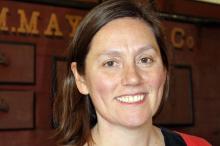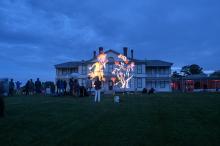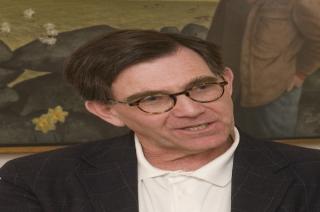Martha's Vineyard Museum
2010
The Vineyard was a frightening place for a young girl to be during World War II, but exciting too. Servicemen were walking the streets before their deployment to Europe. Navy and Army pilots conducting training exercises overhead occasionally came crashing into the ocean. And there were the constant rumors of enemy spies and submarines along the Island’s shores.
As Island residents go kicking and screaming into the future, the Martha’s Vineyard Museum has always served as a refuge in turbulent times. Here the centuries mingle and Island life never changes. In one room, romantic maritime tableaus etched by idling seamen in the jawbones of sperm whales recall the glory of Martha’s Vineyard’s seafaring past, while in the next gallery the indelible 20th century folk art of Stanley Murphy revels in the workaday triumphs of a rural Island community.
2009
The Martha’s Vineyard Museum has named David Nathans, of Princeton, N.J., as its new director. He will take over from Keith Gorman in late August.
Mr. Nathans, the founder and director of the Sydney Company, a marketing and business development firm with a focus on museums and cultural arts organization, will relocate to the Vineyard, according to a museum announcement.
2008
The future setting of the Martha’s Vineyard Museum is the subject of a meeting tonight of its board of directors. The 26-member board will discuss whether to continue with an ambitious $27 million capital plan to relocate the museum to West Tisbury, or to move operations to the Edgartown school. Alternatively, the board could scrap both proposals and stay put at its original campus on the corner of School and Cooke streets in Edgartown.
Martha’s Vineyard Museum executive director Keith Gorman recently received good news from the National Endowment for the Humanities — the museum has been awarded its second National Endowment for the Humanities grant this year, this one in support of the development of the theme and content in the museum’s future permanent exhibit in its future museum facility.
Linsey Lee emerged from what was once the Vineyard’s first African American church last week peeling a respirator from her face. By her count, she had spent more than 150 hours in the Bradley Memorial Church in Oak Bluffs, and the mask stood as a shield between her and decades of dust.








